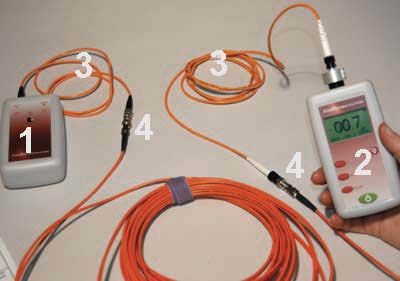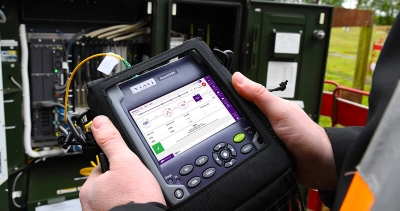All You Need to Know About Robotic Vision and Its Applications in Advanced Optical Dimension Equipments
Robotic vision represents a substantial advancement in the junction of computer system vision, man-made knowledge, and device discovering. This modern technology improves the precision of optical measurement systems, allowing real-time data analysis and boosted quality assurance. Its influence spans numerous industries, from making to health care. The developing landscape of robot vision increases questions about future abilities and applications. What advancements lie ahead in this transformative area?
Understanding Robotic Vision: Secret Concepts and Technologies
Robotic vision encompasses the technologies and methodologies that make it possible for machines to interpret and understand visual details from their setting. This area integrates elements of computer system vision, expert system, and machine discovering to promote automated decision-making based upon aesthetic data. Trick principles include image processing, which includes the enhancement and evaluation of photos to draw out purposeful features, and things recognition, which permits machines to identify and identify things within a scene.

The Integration of Robotic Vision With Optical Dimension Solutions
As markets progressively demand precision and efficiency, the assimilation of robot vision with optical dimension systems has emerged as a transformative approach. This synergy permits robotics to view and translate their surroundings, boosting the capability of optical measurement systems to examine and assess things with unrivaled accuracy. By equipping optical sensors with sophisticated imaging technologies, robot vision makes it possible for real-time information collection and processing, promoting instant changes to dimension criteria.
Moreover, the combination empowers automated systems to detect variations in measurements, surface high quality, and placement, which are critical in quality assurance procedures. Boosted formulas, such as maker discovering, further enhance this combination by improving the systems' capacity to adjust to different atmospheres and situations. As a result, the combination not only simplifies measurement procedures but also reduces errors, making sure that products fulfill rigorous industry criteria, therefore strengthening the function of robot vision in the future of optical dimension systems.
Applications of Robotic Vision in Production
In modern-day production atmospheres, using vision systems has transformed manufacturing processes by allowing makers to perform jobs with impressive accuracy and speed. Robotic vision systems are increasingly employed for quality assurance, where they check items for defects and warranty adherence to specs. These systems use electronic cameras and advanced algorithms to examine items in real-time, significantly decreasing the threat of human error.
Additionally, robot vision promotes automation in assembly lines, allowing robots to properly recognize elements and construct them with minimal downtime. This modern technology likewise boosts supply management, as vision systems can keep track of stock levels and discover discrepancies, ensuring a smooth supply chain.
Additionally, robotic vision help in the implementation of wise factories, where information from vision systems can be incorporated with various other modern technologies to maximize workflows. Overall, the applications of robotic vision in making demonstrate its important duty in enhancing performance, high quality, and performance throughout various industries
Robotic Vision in Medical Care: Transforming Client Treatment

In rehabilitation, robot vision aids in monitoring patient progression and tailoring therapy sessions to individual requirements. It supports Your Domain Name doctor by automating tasks such as data collection and person monitoring, permitting even more time to concentrate on straight client interaction. Additionally, robotic vision improves telemedicine by allowing remote medical diagnosis and digital examinations, connecting the void in between clients and healthcare suppliers. In general, the application of robotic vision in health care is transforming client care, leading to enhanced results, effectiveness, and patient complete satisfaction.
Future Trends and Growths in Robotic Vision Innovation
The quick advancement of robotic vision technology promises to even more boost its applications across various sectors, including healthcare. Future fads show a substantial shift More Bonuses in the direction of including expert system and equipment understanding, making it possible for systems to gain from vast datasets and enhance precision with time. Improved sensor technologies and deep knowing formulas are expected to refine object recognition capacities, allowing robotics to analyze complex environments extra properly.

The assimilation of augmented truth (AR) with robotic vision will likely revolutionize just how robots aid in surgical procedures and diagnostics. This synergy will certainly assist in real-time information visualization, improving decision-making procedures. Additionally, miniaturization of elements will lead to more portable and functional robotic vision systems suitable for a range of jobs. As these advancements unfold, industries will certainly witness enhanced automation and effectiveness, strengthening robotic vision as a foundation of innovative technical solutions.
Often Asked Concerns
What Are the Main Parts of a Robot Vision System?
The primary parts of a robot vision system include cameras for photo capture, processors for information analysis, algorithms for interpretation, and actuators for motion. Together, these elements make it possible for robotics to view and connect with their setting successfully.
Exactly How Does Robotic Vision Improve Accuracy in Measurements?
Robotic vision improves measurement accuracy by utilizing advanced imaging modern technologies, making it possible for exact item discovery and spatial analysis. This ability decreases human mistake, boosts repeatability, and permits for real-time modifications, eventually improving overall dimension reliability and effectiveness.
What Industries Advantage Most From Robotic Vision Innovation?
Various sectors benefit considerably from robotic vision innovation, consisting of production, health care, farming, and logistics. These sectors utilize enhanced precision, effectiveness, and automation, causing boosted efficiency and lowered operational prices in their respective processes.
Can Robotic Vision Equipments Operate In Low-Light Issues?
Robotic vision systems can undoubtedly work in low-light conditions, using advanced sensors and formulas to enhance picture clarity. This capacity enables them to do effectively in numerous settings, consisting of commercial and surveillance applications, despite very little illumination.
What Are the Costs Connected With Applying Robotic Vision?
The costs connected with implementing robotic vision vary considerably, affected by parts such as electronic cameras, over here software, and integration. Extra expenditures include maintenance, training workers, and potential upgrades to existing systems, which can build up in time.